
On the one hand it feels barbaric and sacrilegious, cutting up nice art books. But, on the other, that’s why I bought this particular title. To turn as many of the pics as poss’ into framed prints. Some for our home, the remainder to sell.
Here are a selection of images from this book, pre-op’, so to speak.
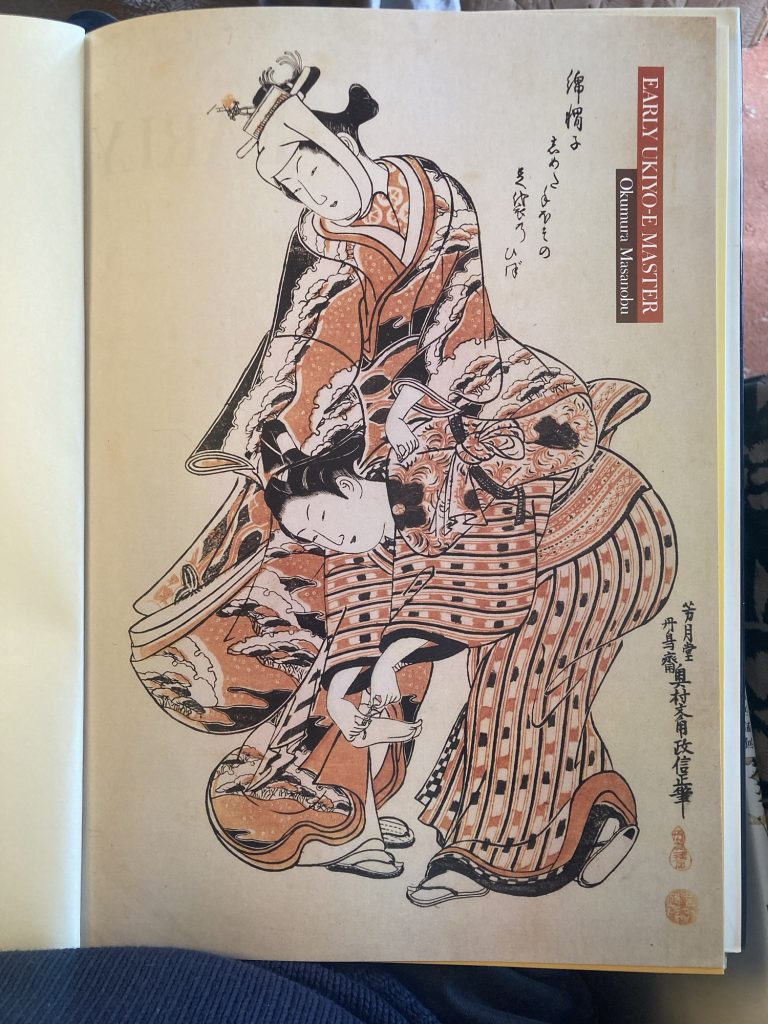
Apparently ukiyo-e translates as ‘pictures of the floating world’, which in itself is quite beautiful. The period of their popularity is, I’ve read, 17th-19th C. And, as per the book title, these examples are ‘early’.

I wonder if the colours have faded and become more muted? I kind of suspect they might once have been more vivid, when originally printed. But I rather like the effect time has wrought.

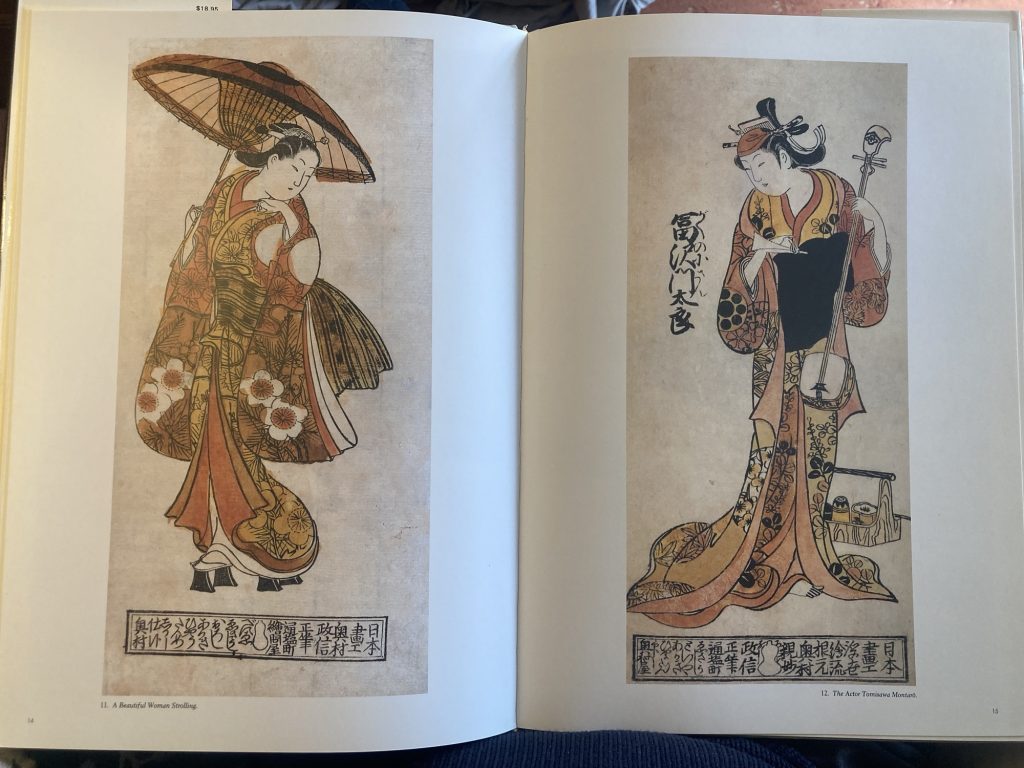
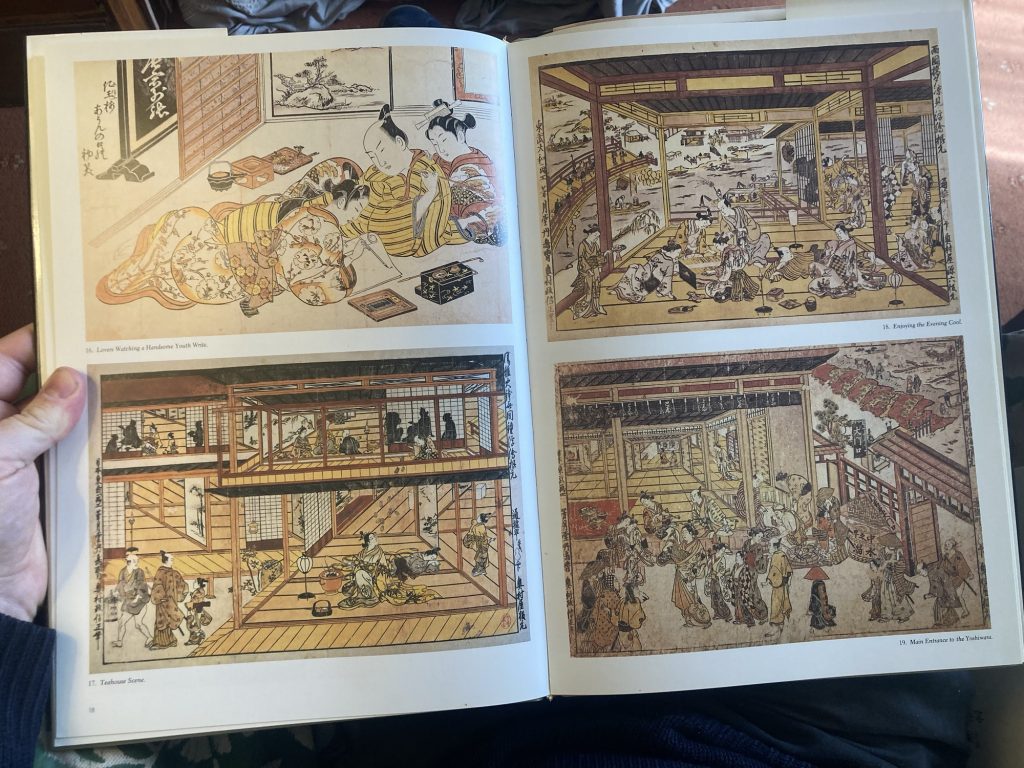
Most of the examples in this book are single figures. Tall and thin. With practically no background or contextual detail. But there’s a segment given over to ‘scenes’, which are landscape and not portrait in orientation, include multitudinous figures, and contextual detail or settings.
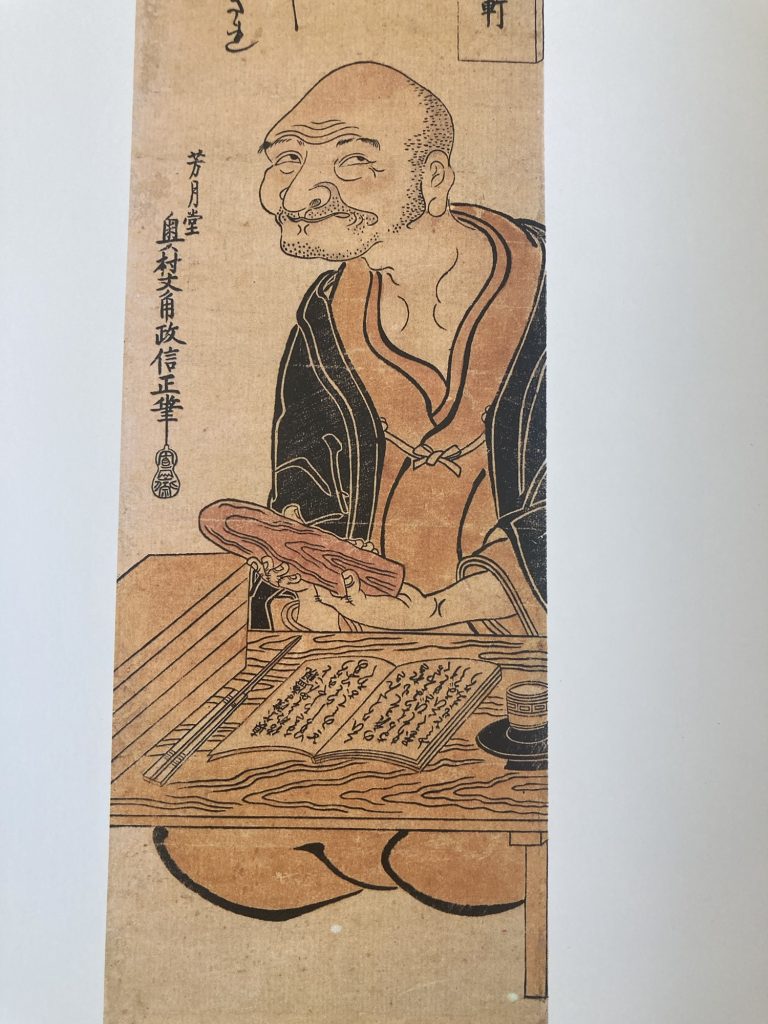
This one – above – is a bit odd. And rather saucily suggestive. The lady below looks across from the opposite page, rather disapprovingly.

All told, I think this book is a great way for us to procure numerous Japanese prints. Some for the beautification of our home. The remainder I hope to sell.

The print that leaped out at me was the one above and on the right. Which also appears, cut from the book, atop this post. I got a cheap frame from TOFS, for £5, and… thar she blows:
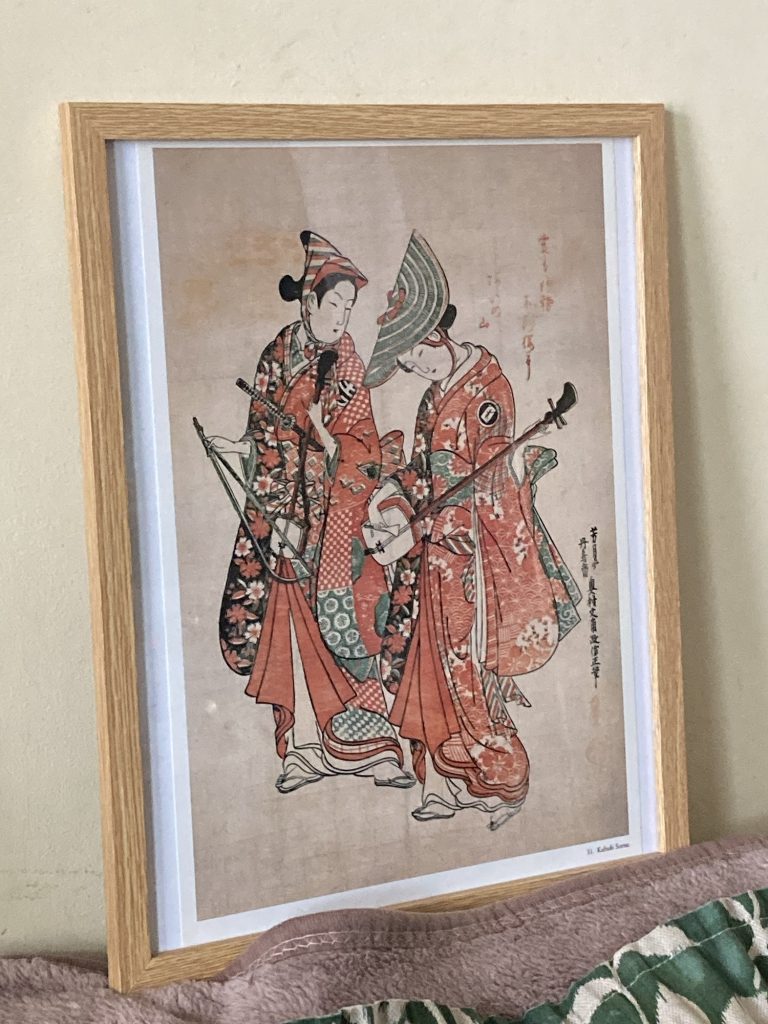
I need to get a frame mount cutter. Then I can tailor-make picture mount frames, which’ll make such pieces look a lot better. The tool I need is something like this:

For the time being, I’m using the pre-cut supplied mounting card.

And, finally, the print is up in the wall of our bedroom.
